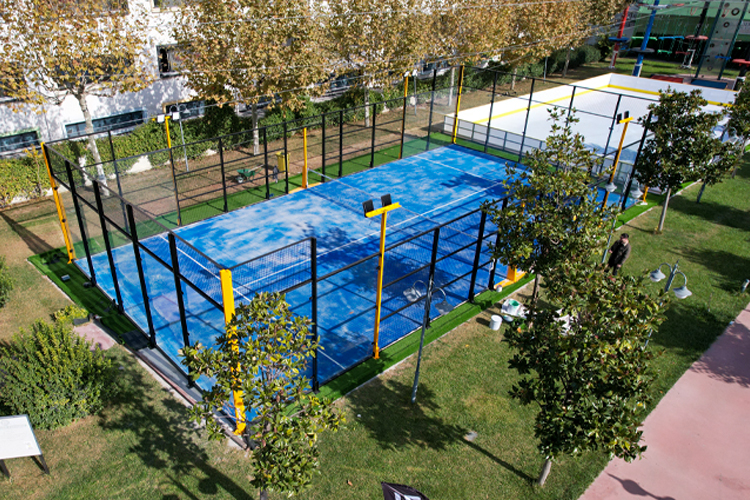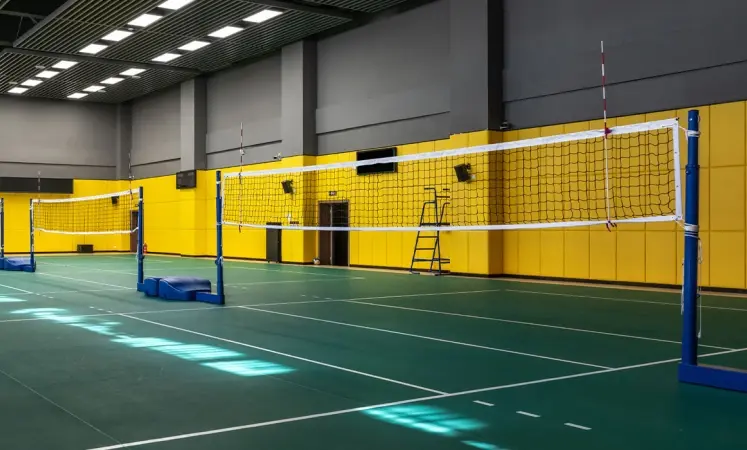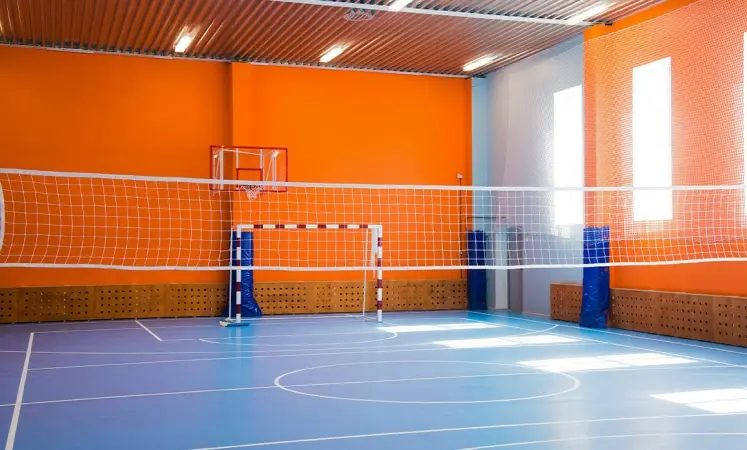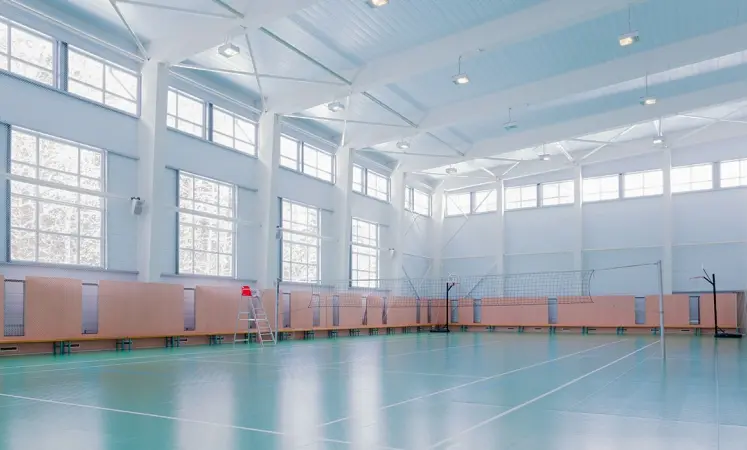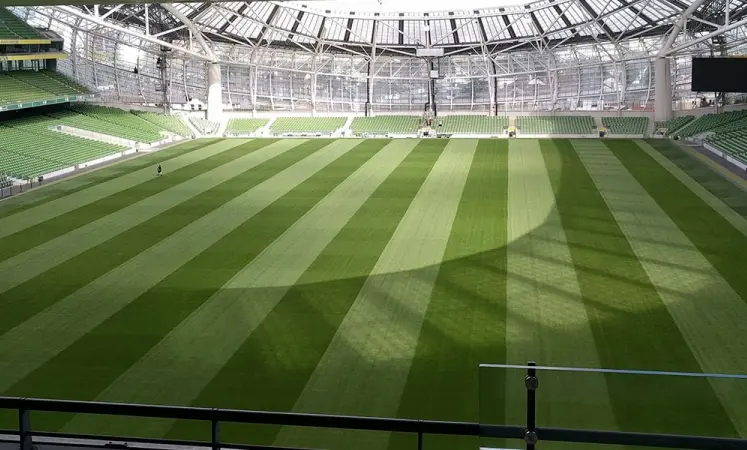Volleyball Court Construction
Volleyball is one of the most popular team sports worldwide, played both professionally and recreationally. Whether indoors or outdoors, volleyball courts are essential for ensuring an optimal playing experience. Constructing a volleyball court requires attention to detail, proper materials, and a solid understanding of the court's dimensions and design elements. In this article, we will cover everything you need to know about building a volleyball court, including the different types of courts (indoor and outdoor), the essential measurements, and the steps involved in the construction process.
Understanding Volleyball Court Dimensions
The first step in constructing a volleyball court is understanding the official dimensions. Volleyball courts, whether indoor or outdoor, must adhere to specific size guidelines to ensure proper gameplay. Let’s look at the official dimensions for both types of courts:
Indoor Volleyball Court Dimensions
For indoor volleyball, the official court dimensions are outlined by the Fédération Internationale de Volleyball (FIVB), the sport’s international governing body. The standard indoor volleyball court is:
- Length: 18 meters (59 feet)
- Width: 9 meters (29.5 feet)
- Attack Line: 3 meters (9.8 feet) from the centerline
- Net Height: Men’s: 2.43 meters (7 feet, 11 5/8 inches), Women’s: 2.24 meters (7 feet, 4 1/4 inches)
These measurements ensure the court provides enough space for fast-paced gameplay, allowing players to move freely and engage in competitive play. The boundary lines of the court are typically marked with a solid color, while the centerline divides the court into two equal halves.
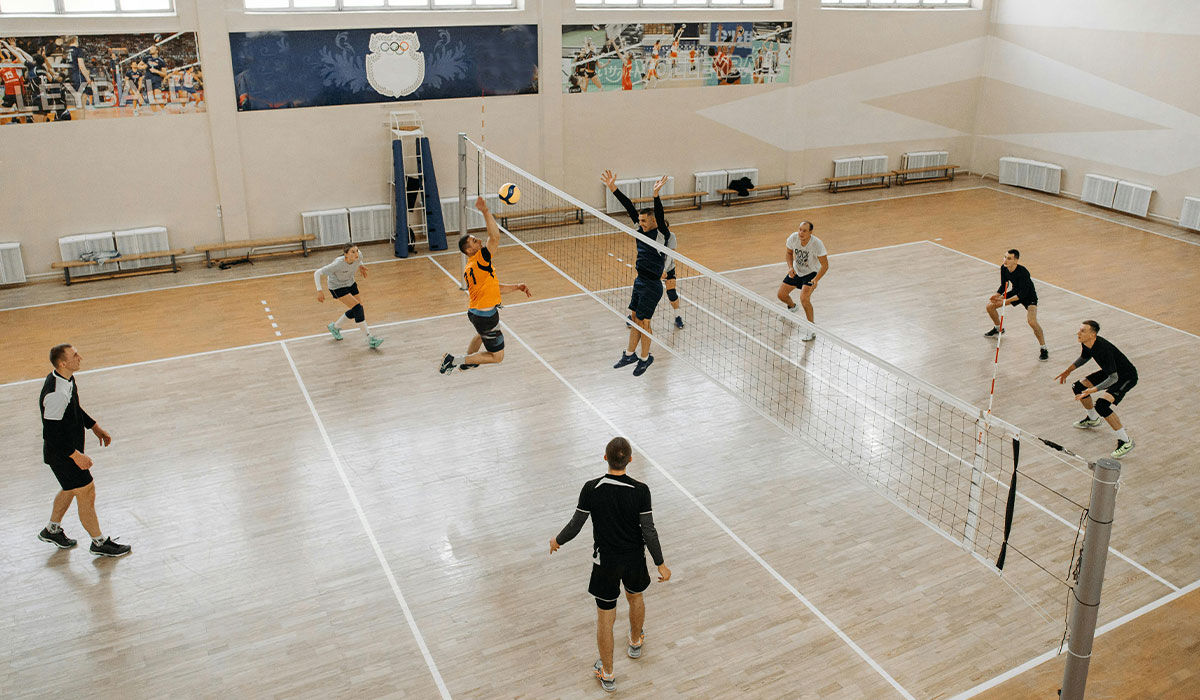
Outdoor Volleyball Court Dimensions
Outdoor volleyball courts, particularly for beach volleyball, differ slightly in their dimensions compared to indoor courts. The standard outdoor volleyball court dimensions are:
- Length: 16 meters (52.5 feet)
- Width: 8 meters (26.2 feet)
- Net Height: Men’s: 2.43 meters (7 feet, 11 5/8 inches), Women’s: 2.24 meters (7 feet, 4 1/4 inches)
Beach volleyball courts have similar measurements but with some notable differences in the surface and environment. Beach volleyball courts are often surrounded by sand, which creates a different playing experience compared to the hard surface of an indoor court.
Indoor vs. Outdoor Volleyball Courts
Indoor Volleyball Courts
Indoor volleyball courts are typically constructed in gyms or sports complexes where climate control is a factor. These courts can be used year-round and are not affected by weather conditions. When building an indoor volleyball court, there are several factors to consider:
- Flooring Material: The floor should be made of high-quality materials like wood or synthetic surfaces designed to provide the right balance of traction and shock absorption. This ensures that players are safe and can make quick movements without risking injury.
- Lighting: Proper lighting is crucial for indoor courts to ensure visibility and safety. Lighting should be evenly distributed across the court, with no shadows that could interfere with play.
- Ventilation and Temperature Control: Indoor courts should be equipped with proper ventilation and air conditioning systems to maintain a comfortable playing environment.
- Ceiling Height: Indoor volleyball courts should have a minimum ceiling height of 7 meters (22.9 feet) to allow for high serves and spikes.
Indoor volleyball courts are ideal for professional leagues, school gyms, and recreational facilities where weather conditions do not hinder play.
Outdoor Volleyball Courts
Outdoor volleyball courts, such as those found at beaches, parks, or recreational centers, are subject to different considerations. The main difference between indoor and outdoor volleyball courts lies in the playing surface and environmental factors.
- Surface Material: Outdoor courts are typically made of sand, grass, or synthetic turf, depending on the environment. For beach volleyball, sand courts are the most common, providing a softer landing surface and requiring more physical endurance from players.
- Weather Considerations: Outdoor courts are subject to weather conditions such as wind, rain, and extreme temperatures. As such, materials should be weather-resistant to ensure longevity, and players may need to adapt their playstyle according to the wind or other environmental factors.
- Net Height: While the net height remains the same for both indoor and outdoor volleyball, outdoor courts may require more frequent adjustments due to changing conditions like wind or humidity.
- Surroundings and Fencing: Outdoor courts often need to be enclosed by a fence or boundary markers to ensure the ball doesn't get lost, especially in open spaces like beaches or parks. This also provides safety for nearby spectators or pedestrians.
Steps for Volleyball Court Construction
Now that we understand the dimensions and different environments for volleyball courts, let’s dive into the steps involved in constructing a volleyball court.
Step 1: Site Selection and Preparation
The first step is to choose the ideal location for the court. The site should have enough space to accommodate the required dimensions, including a few extra meters around the court for player movement and safety. The ground should be level, free of obstacles, and easily accessible.
- For indoor volleyball courts, a large indoor facility such as a gymnasium or sports complex is required.
- For outdoor volleyball courts, consider a flat area, such as a park or beach. Ensure there are no drainage issues that could cause the court to become muddy or flooded during rainy weather.
Step 2: Foundation and Surface Preparation
The surface preparation for a volleyball court depends on whether it is indoor or outdoor.
- Indoor Courts: For indoor courts, a solid concrete foundation is typically laid down. Over this foundation, a high-quality wooden or synthetic sports floor is installed. The surface must be smooth, durable, and designed for volleyball.
- Outdoor Courts: For outdoor courts, particularly sand courts for beach volleyball, the foundation involves digging and laying down a thick layer of sand. A layer of crushed stone or gravel is typically used underneath the sand to promote proper drainage and prevent flooding.
Step 3: Installing the Net and Boundary Markings
For both indoor and outdoor volleyball courts, the next step is to install the net and mark the court boundaries. The net should be securely anchored at the correct height to ensure proper gameplay. Boundary lines are then marked using tape or paint for indoor courts or a similar marking material for outdoor courts.
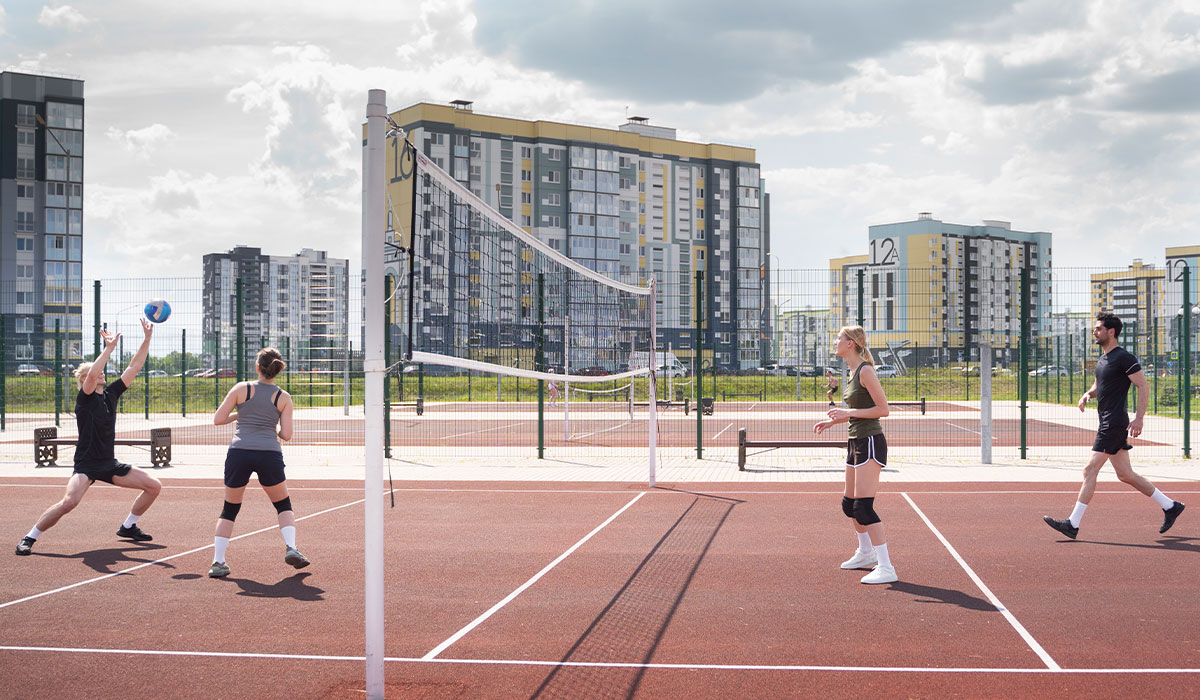
Step 4: Fencing and Additional Features
For outdoor courts, consider installing a fence or other boundary enclosures around the court. This helps prevent the ball from going out of bounds and keeps players and spectators safe. In addition, some outdoor courts include seating arrangements for spectators, providing an ideal viewing experience.
Step 5: Final Adjustments and Testing
Once the court is built, it is crucial to test the surface, net height, and boundary lines to ensure everything is correctly positioned. Adjustments may be necessary to maintain optimal play conditions.
Maintenance of Volleyball Courts
Once the court is completed, regular maintenance is essential to ensure the longevity of the facility. Indoor courts require periodic cleaning and occasional reconditioning of the wooden floor. For outdoor courts, maintaining the sand or grass surface and checking the net for wear and tear is important. Regular inspections will help identify any damage or issues before they affect play.
Constructing a volleyball court, whether indoor or outdoor, requires attention to detail and an understanding of the necessary dimensions, materials, and design considerations. By following the steps outlined in this article, you can create a professional-quality court that provides an optimal playing experience. Whether you are building a recreational court in a park or a competitive facility in a gymnasium, the right design and construction process will ensure that players can enjoy the game to its fullest.
Other News










